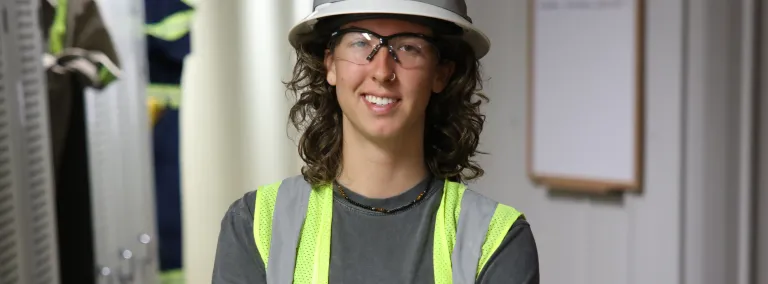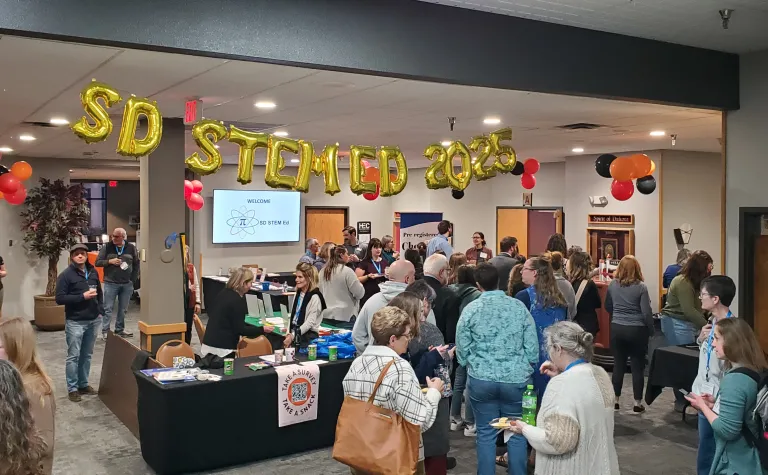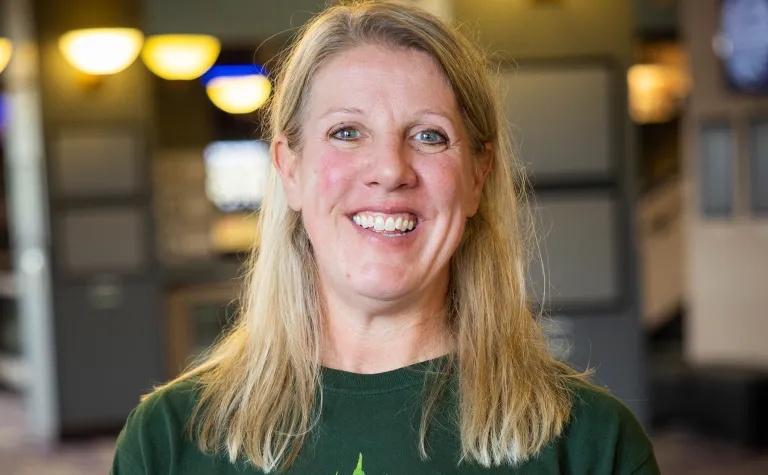Intern finds inspiration hunting radon at America’s Underground Lab
Locating sources of radon at SURF helps scientists and engineers limit its impact on ultrasensitive physics experiments.
As a summer intern, Raine Flick got to see more of the underground workings at the Sanford Underground Research Facility (SURF) than many seasoned employees. Her work, surveying concentrations of underground radon, took her to each level of the facility from the surface to 4850 feet below ground.
“This project was perfect, because it allowed me to see almost every single level that's open and accessible right now. This is the kind of experience that really helps me explore future career options,” said Flick.
Flick is a recent graduate from Black Hills State University with a degree in environmental physical science. She was part of a team of engineers, scientists, and technicians working to get a better understanding of radon sources inside SURF in order to improve ongoing mitigation measures.
If you live or work in a wide swath of North America, radon can be a problem in your home or business. Radon is a naturally occurring colorless and orderless radioactive gas that can be harmful to human health. This map of radon zones may be sobering for anyone living and working in areas with naturally high levels. Fortunately, radon mitigation measures including ventilation for basements, can vastly reduce the associated risk.
However, if your job involves ultra-sensitive physics experiments located a mile underground in a world-class laboratory with 370 miles of shafts and tunnels, radon is a different challenge.
In cutting-edge dark matter detectors like LUX-ZEPLIN even miniscule amounts of radon, at levels much too low to detect by conventional methods or cause health problems inside a home, can compromise experiment results. Physicists, who work on these ultra-sensitive detectors, go to great measures to reduce the levels of naturally occurring radon near their scientific equipment.
This summer at SURF, Flick’s deployed a high-end radon monitor, called an Alphaguard, at each level she visited.
“It would take a reading every hour,” said Flick. “I would export that data, and we would graph the radon against the time duration. So, we would get to see how the radon levels change throughout that day, or throughout that week, and we would also get an average radon reading at each location.”
The effort to determine underground radon sources is tied to the complex geology at SURF.
“There are certain types of rocks that are going to make more radon than other types. Rhyolite in particular is the big one. The rock types in various areas gave the team some ideas of where to start putting radon detectors and eventually air doors to help cut-off any areas of higher emissions,” said Doug Tiedt, a research scientist at SURF who helps lead the radon mitigation efforts at the facility.
The ultimate goal of this work is to find the sources of radon inside the large underground workings at SURF, then take measures to reduce the airflow from any sources to areas of SURF with active research underway. The process involves managing complex system of air flow underground. At SURF, fresh air comes in through the Yates and Ross shafts, flows down to the main lab space at the 4850 level, and is expelled back up the Oro Hondo and #5 Shaft exhaust fans. Airflow is also controlled through other levels of the facility. The work of Flick and the team helps the SURF engineering staff better determine placement and use of air doors to isolate any areas of higher concentration.
For Flick, the effort to help advance the world class science at SURF, brought a valuable education opportunity.
“Overall, I think it was a really great experience,” said Flick. “Working here allowed me to see multiple areas of work that I usually wouldn't get to see in just a single industry, so it really broadened my horizons and helped me understand a little bit more about what I want to do in the future.”
Summer internship applications for 2025 are now open at SURF. College students interested in a summer of work at SURF in a range of fields including community relations, engineering, environmental safety and health, science, and communications.



